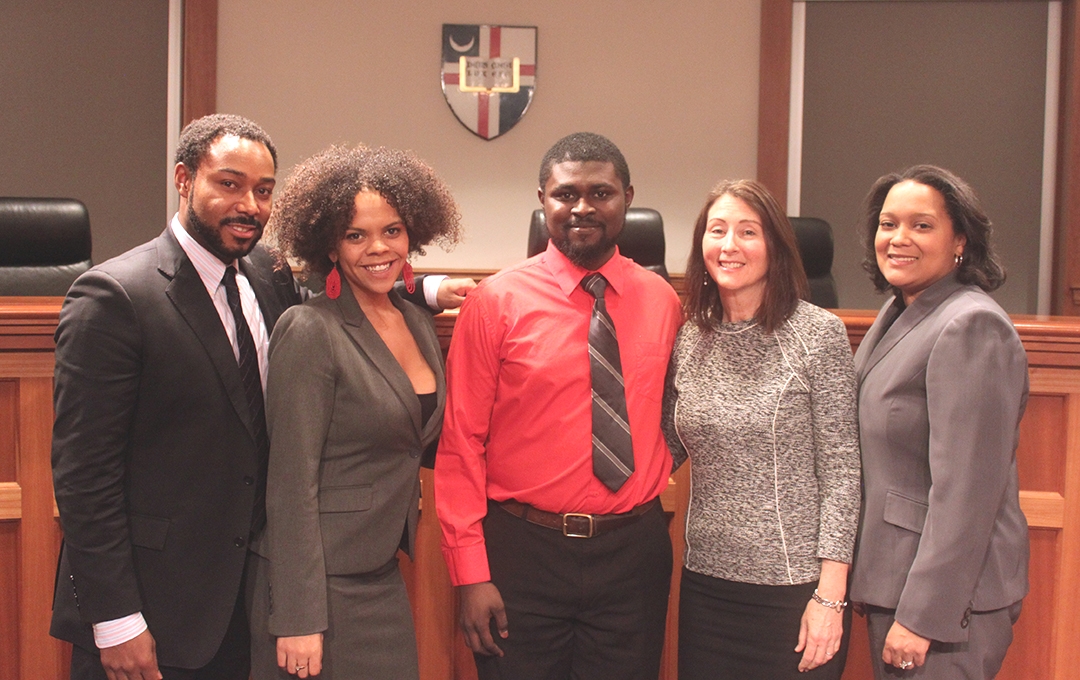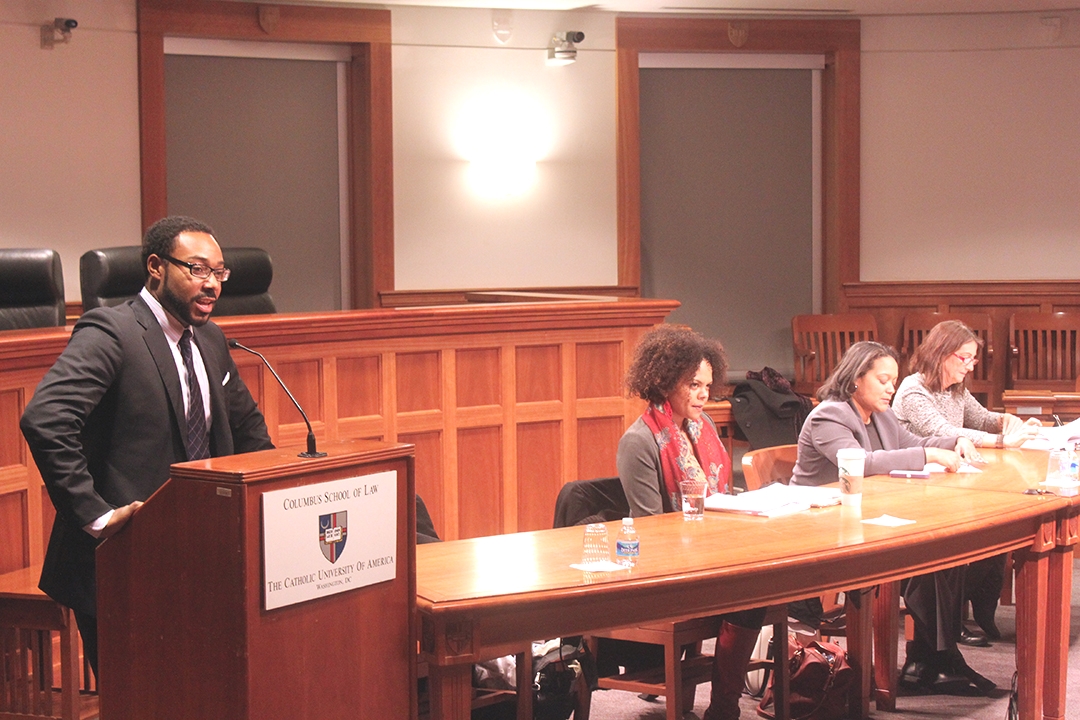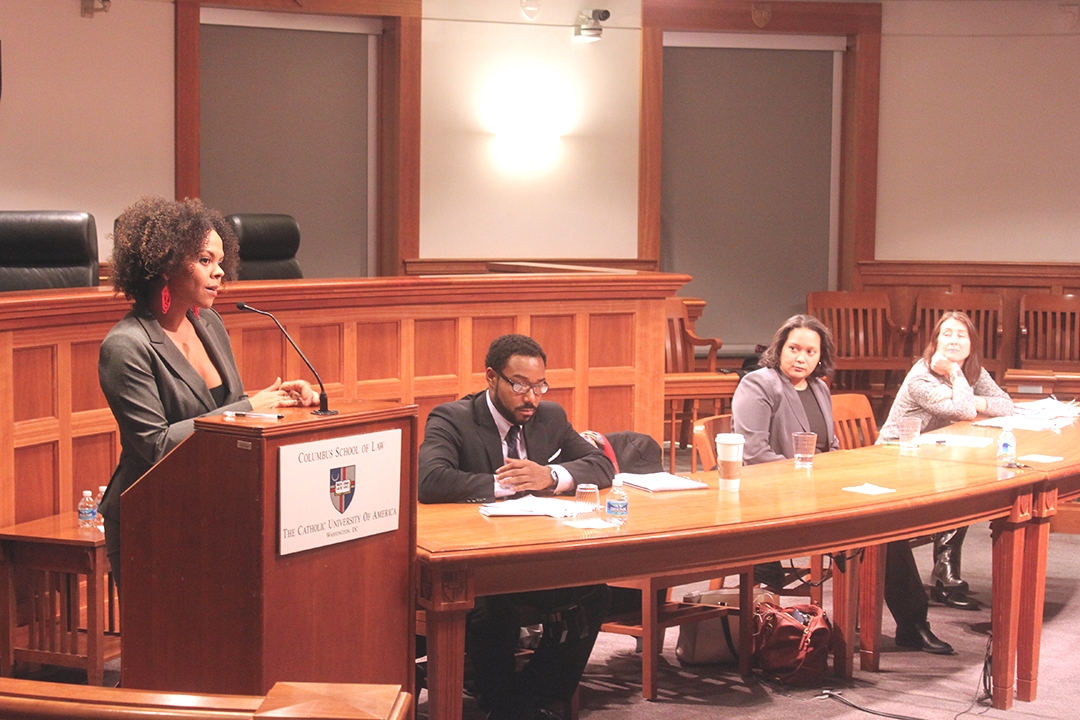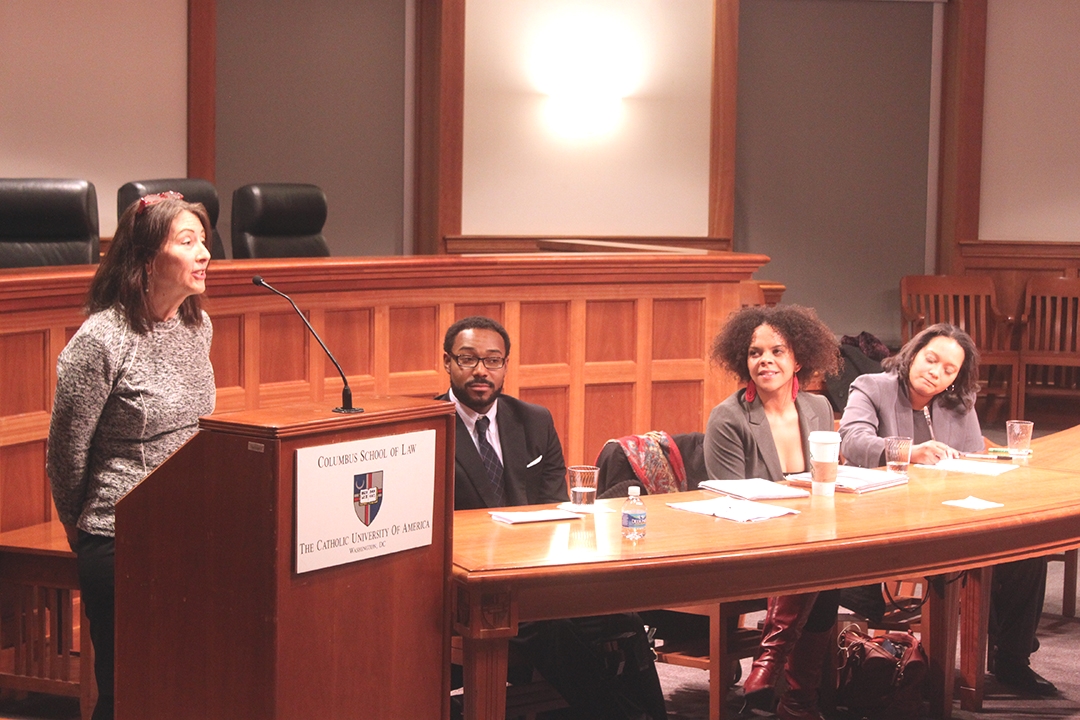
L-R: Justin Hansford, assistant professor at St. Louis University School of Law; Marbre Stahly-Butts, Open Society Soros Justice Fellow with The Center for Popular Democracy; Marques Banks, BLSA; Leslie M. Proll, director of the Washington, D.C. office of the NAACP Legal Defense and Educational Fund; Nicole Lee, coordinator for the Ferguson Legal Defense Committee.
Seven months after unarmed teenager Michael Brown was shot and killed by an officer of the Ferguson, Missouri police department, some lessons can be learned and some conclusions drawn from the incident and its aftermath, according to a panel of experts.
Catholic University's Black Law Students Association sponsored a two-hour panel discussion, "Focus on Ferguson: Police Use of Force and Next Steps" at the law school on Feb. 5 as a way to explore some of the deeper themes brought to the surface by Brown's death.

The table of four civil rights experts included two people who spent a great deal of time in Ferguson in the weeks and months following the incident, giving them firsthand experience with the street demonstrations that erupted. Justin Hansford, an assistant professor at St. Louis University School of Law, lives just ten minutes from the site of the protests. "People in Ferguson decided they were going to definitely respond and I was proud to be a part of it," he said. "We're in the middle of a crisis in America and we're privileged to be working towards a solution." Hansford, who was a founder of The Georgetown Journal of Law and Modern Critical Race Perspectives as a law student, broke with conventional wisdom on a couple of fronts. Two suggestions that have gained traction since Brown's death are that police should wear body-cams at all times, and that citizens' review boards be established to examine such events in the future. Hansford was dismissive of both ideas.

Body-cameras "Will contribute to the overt incarceration of black youth by videotaping people not suspected of any crime," he noted, while citizens review boards would be "toothless, without any powers of subpoena.' Nicole Lee, a human rights lawyer and coordinator for the Ferguson Legal Defense Committee, sometimes felt like she was in another country as she watched the anger boil over in the streets, met with tear-gas by police and even accompanied by taunts directed at the demonstrators, "You're going to be the next hash-tag." "Yet this wasn't some foreign place. These were scenes in the suburbs of America, but it looked a lot like Baghdad," Lee said. "Nothing short of a mass human rights demonstration will change the U.S." The protest that erupted in Ferguson after Brown's fatal shooting eventually spread to at least 250 U.S. cities, which saw similar events take place.

Marbre Stahly-Butts, an Open Society Soros Justice Fellow with The Center for Popular Democracy, stated that "White supremacy and economic inequality" lay at the root of the unrest nationwide. "When the media leave, the outrage remains. These protests are not a moment, they're a movement," she said. Stahly-Butts, whose work focuses on supporting families affected by drug-related evictions in New York City, thinks that the stark fault lines exposed between police and citizenry by Ferguson raise an important national question. "Communities have to decide the purpose of policing. It's a chance to reimagine what policies should do," she said. The final speaker was Leslie M. Proll, director of the Washington, D.C. office of the NAACP Legal Defense and Educational Fund. Proll decried the lack of reliable national data about how many citizens are killed by police each year. Proll said her organization has pressed the Justice Department's Office of Civil Rights to provide the information.

"We've been talking to them and will continue to talk with them. We were appalled when we realized what is not out there," said Proll. The panel took questions from the audience at the end. In response to one, Professor Hansford offered a thought that seemed to sum up the afternoon's discussion. "There has to be a human rights model of policing," he said.
